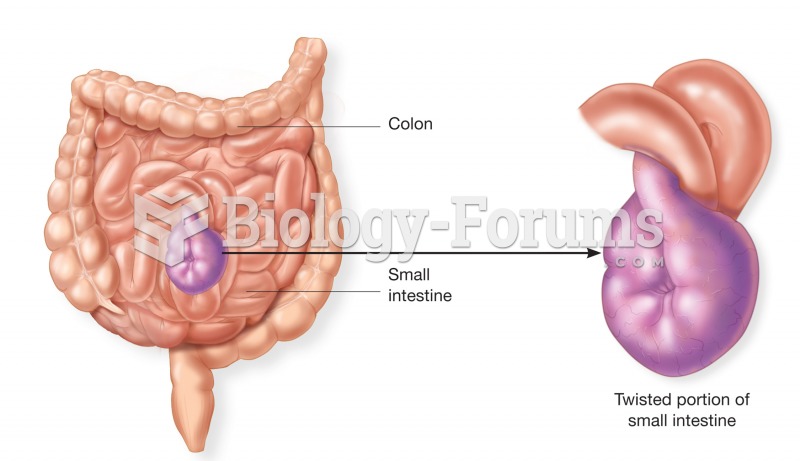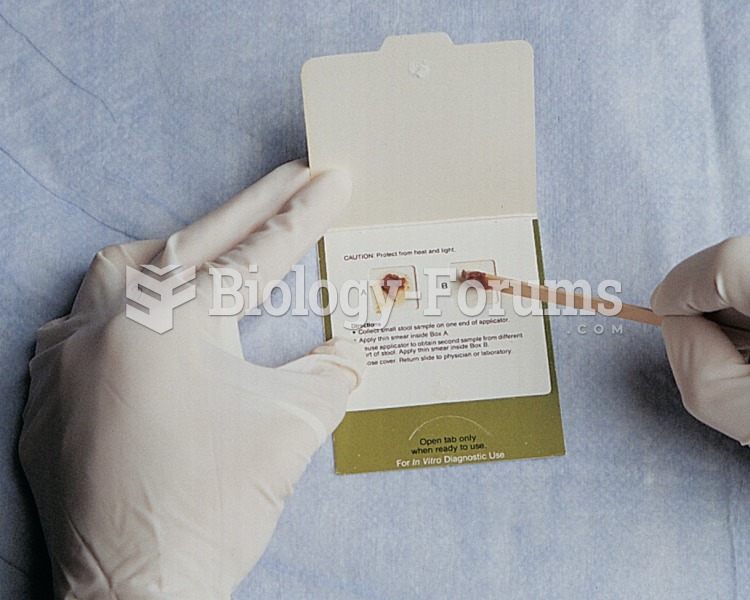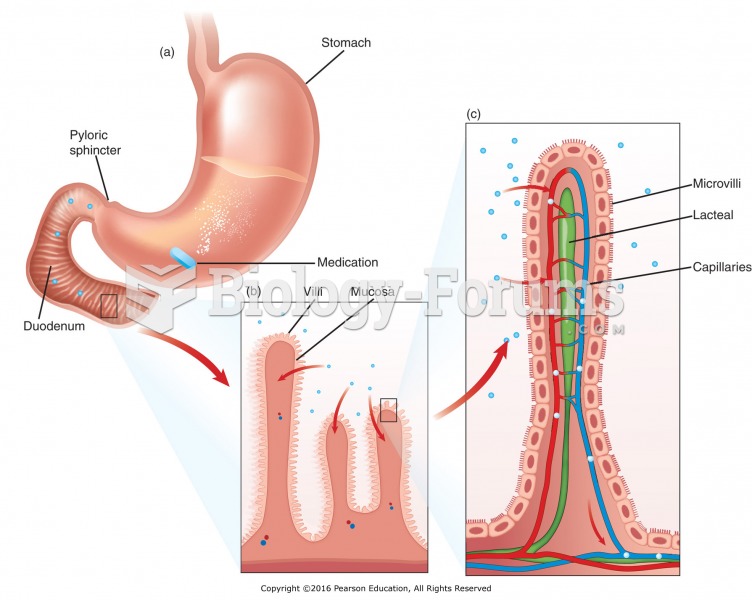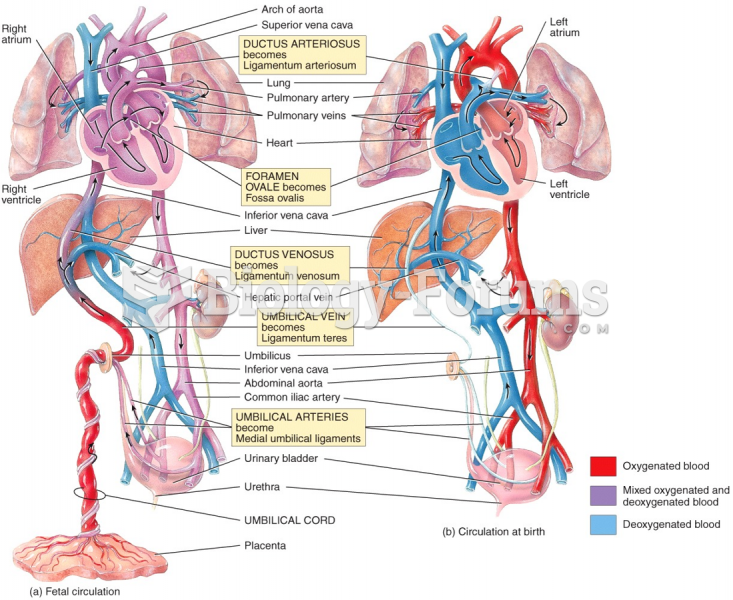|
|
|
More than 34,000 trademarked medication names and more than 10,000 generic medication names are in use in the United States.
It is widely believed that giving a daily oral dose of aspirin to heart attack patients improves their chances of survival because the aspirin blocks the formation of new blood clots.
Essential fatty acids have been shown to be effective against ulcers, asthma, dental cavities, and skin disorders such as acne.
About 60% of newborn infants in the United States are jaundiced; that is, they look yellow. Kernicterus is a form of brain damage caused by excessive jaundice. When babies begin to be affected by excessive jaundice and begin to have brain damage, they become excessively lethargic.
More than 4.4billion prescriptions were dispensed within the United States in 2016.
 Volvulus. A length of small intestine has twisted around itself, cutting off blood circulation to th
Volvulus. A length of small intestine has twisted around itself, cutting off blood circulation to th
 Instruct the patient to use an applicator to apply a small amount of stool in the appropriate boxes ...
Instruct the patient to use an applicator to apply a small amount of stool in the appropriate boxes ...





